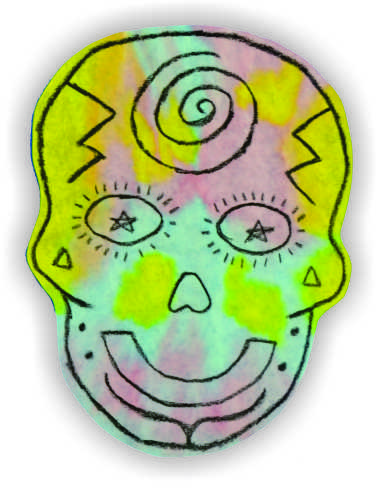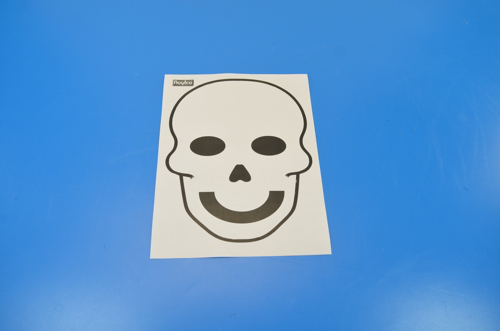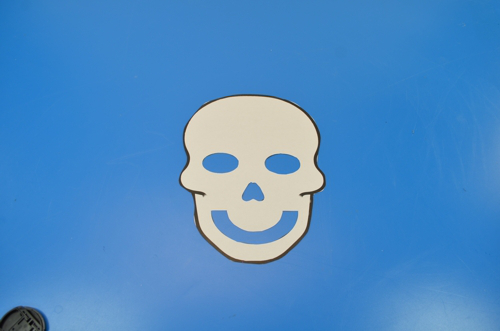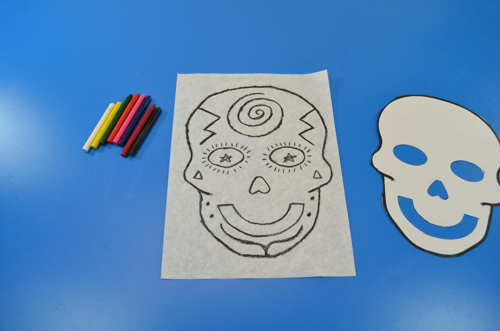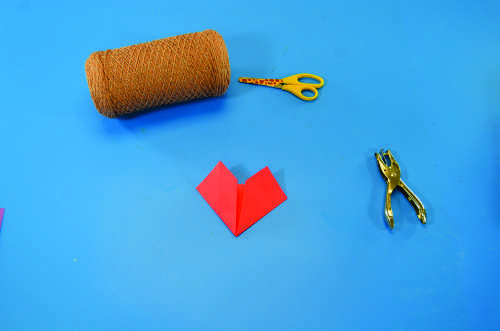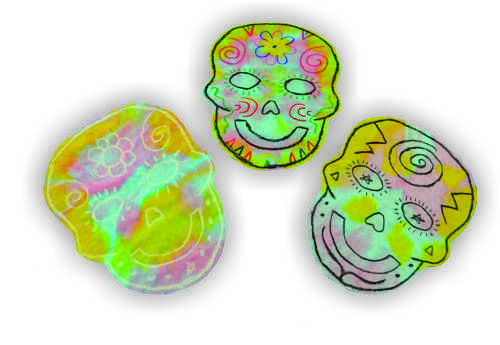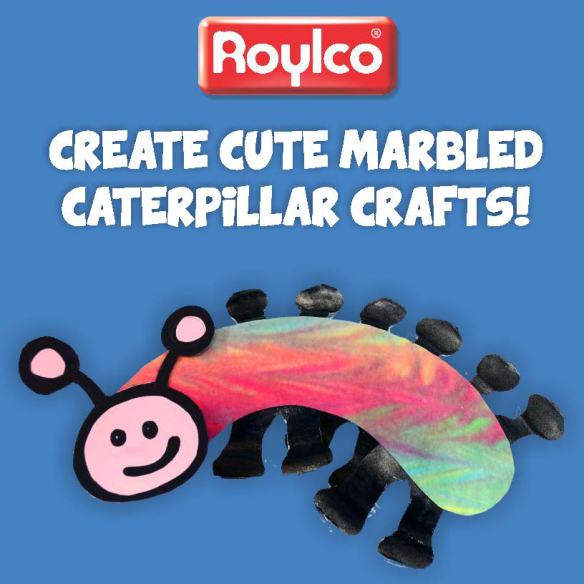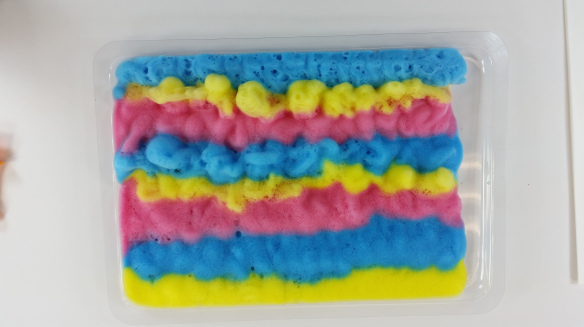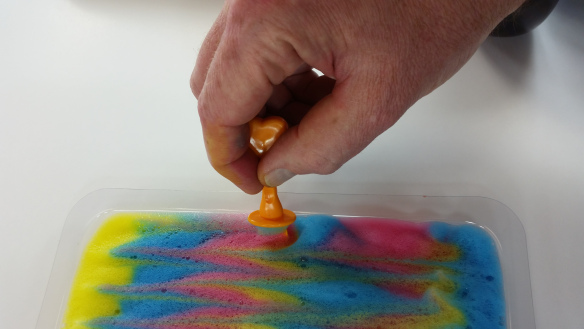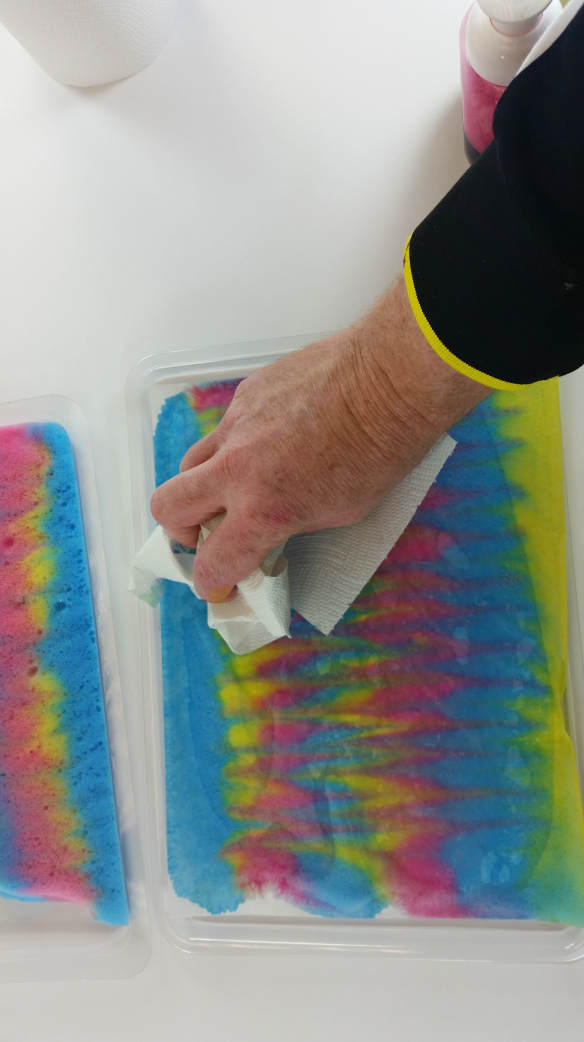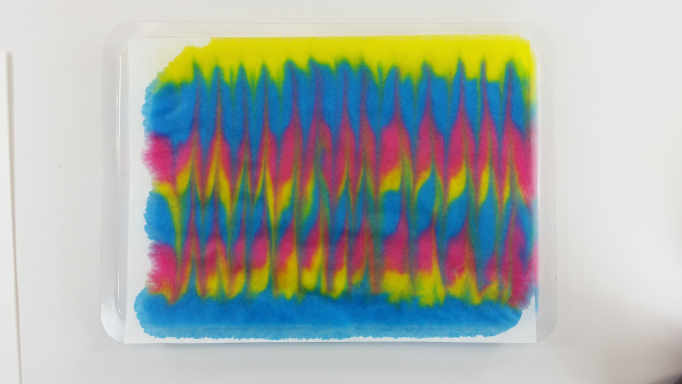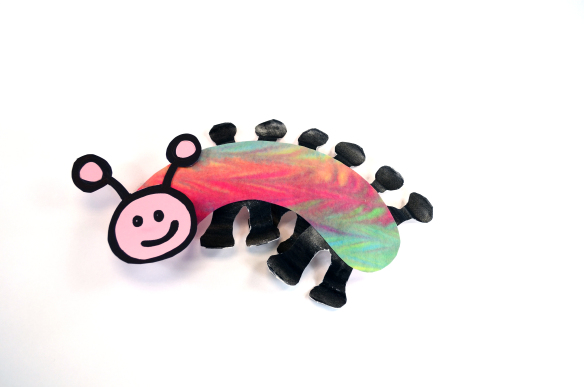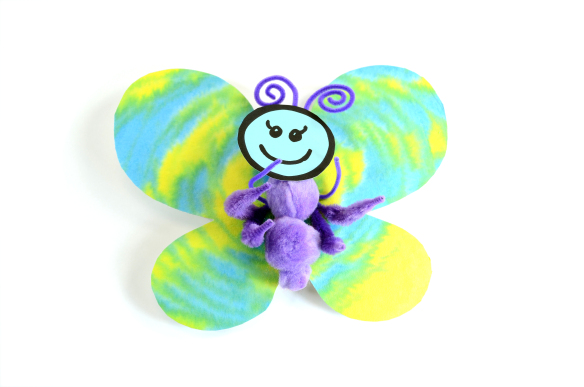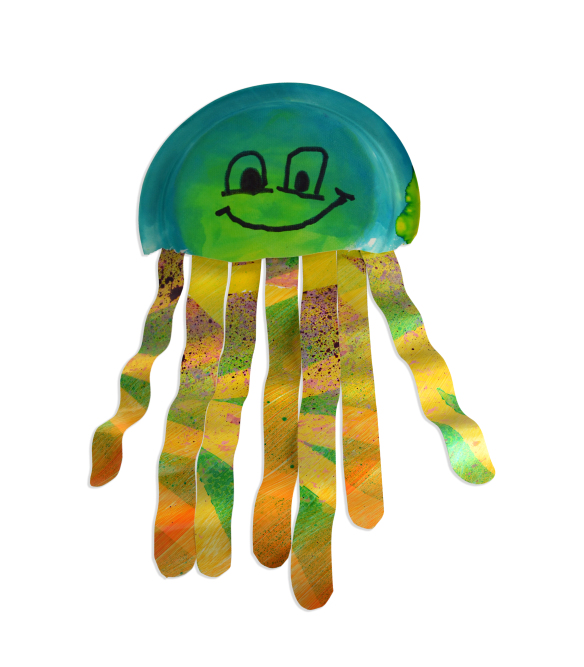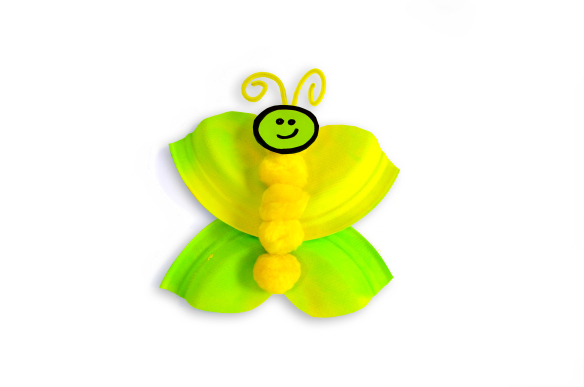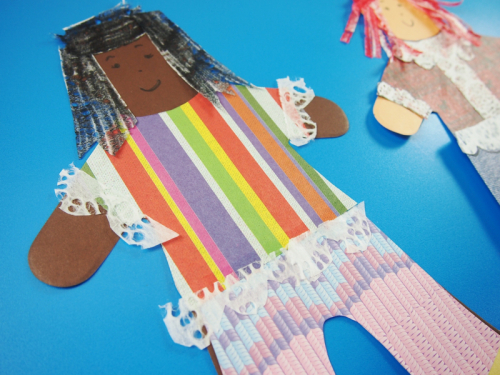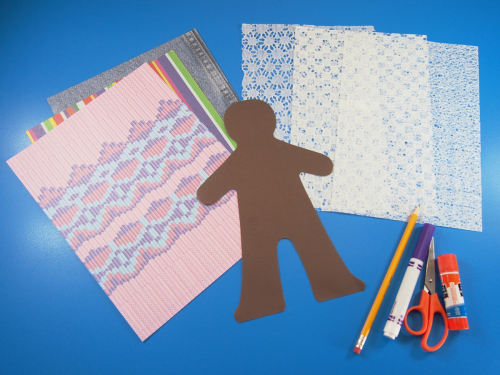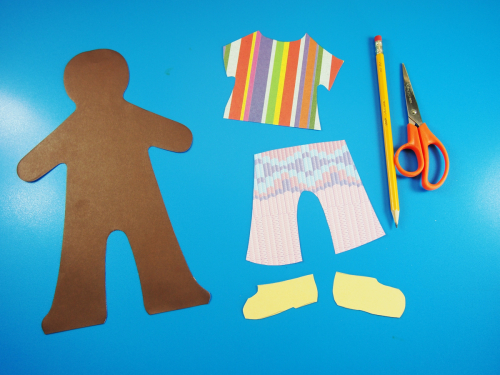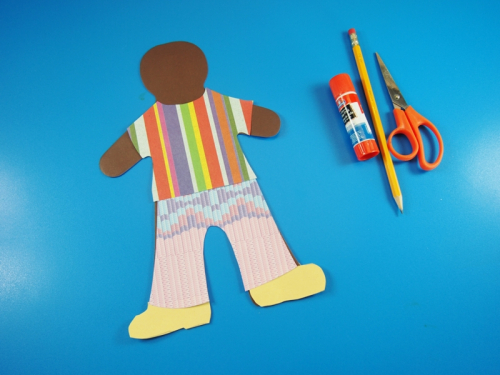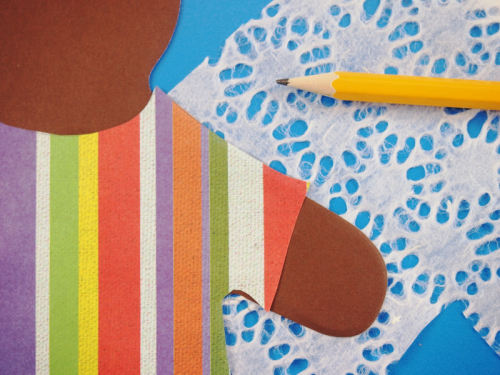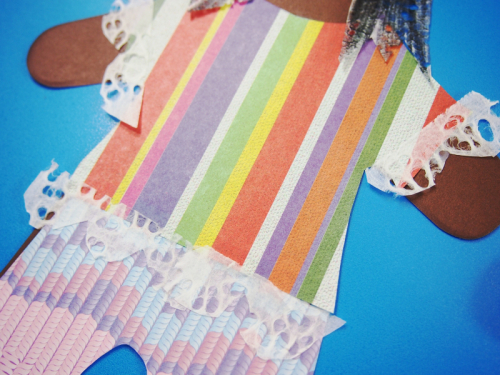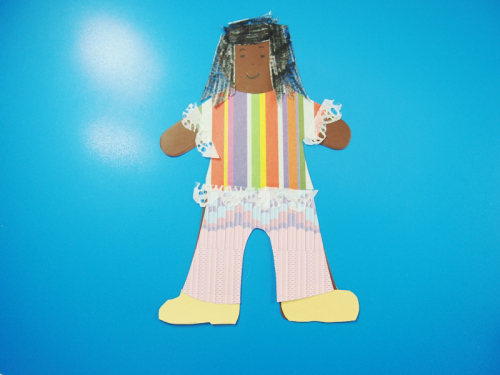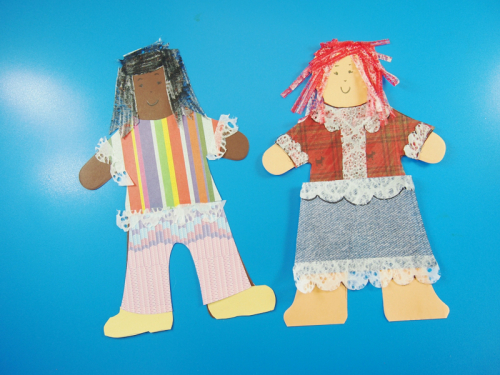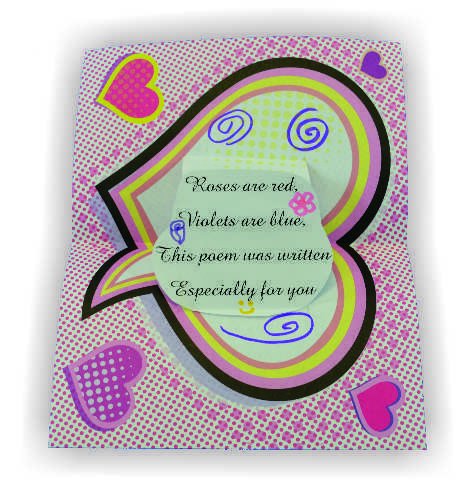
This cheerful mask incorporates paper sculpting to create vivid 3D facial features! Use as part of a costume or as colorful wall art!
Age: 5+
Duration: 30 minutes (plus drying time)
Learning Outcomes: Practice sculpting with paper. Explore new art techniques. Exercise fine motor skills. Talk about what masks represent for various world cultures.
You’ll Need:
- R52010 African masks
- R2172 Tissue Circles
- Sculpting paper (we used white printer paper, but you can experiment with newsprint or construction paper)
- White glue (mixed with equal parts water)
- Tape
- Paintbrush

- To start this project, mix equal parts white glue and water in a small dish.
- Tape the V’s at the top and bottom of the mask together. This will make a convex mask, and prevent the tissue “skin” from tearing. If you use this technique on a flat mask, the glue and tissue will crack when you transform the mask to 3 dimensions.
- Challenge kids to crumple, bend and twist paper in order to sculpt their mask’s facial features. Tape each facial feature securely in place.
- Using your paint brush, spread your glue and water mix over your mask. Carefully lay tissues circles on the mask, and laminate them in place with more of your glue and water mixture. The tissue will absorb the moisture and mold itself to the contours of the facial features. If necessary, tear the tissue circles into different shapes to cover smaller areas.
- Allow the glue to dry thoroughly!
- Trim off any excess tissue paper.
- Use chenille stems to secure your mask to your head, or to hang it on the wall!
bundled price
to Cart

Like us on Facebook, Share this post with your friends, or Subscribe to this blog today to receive original craft project updates every week!

